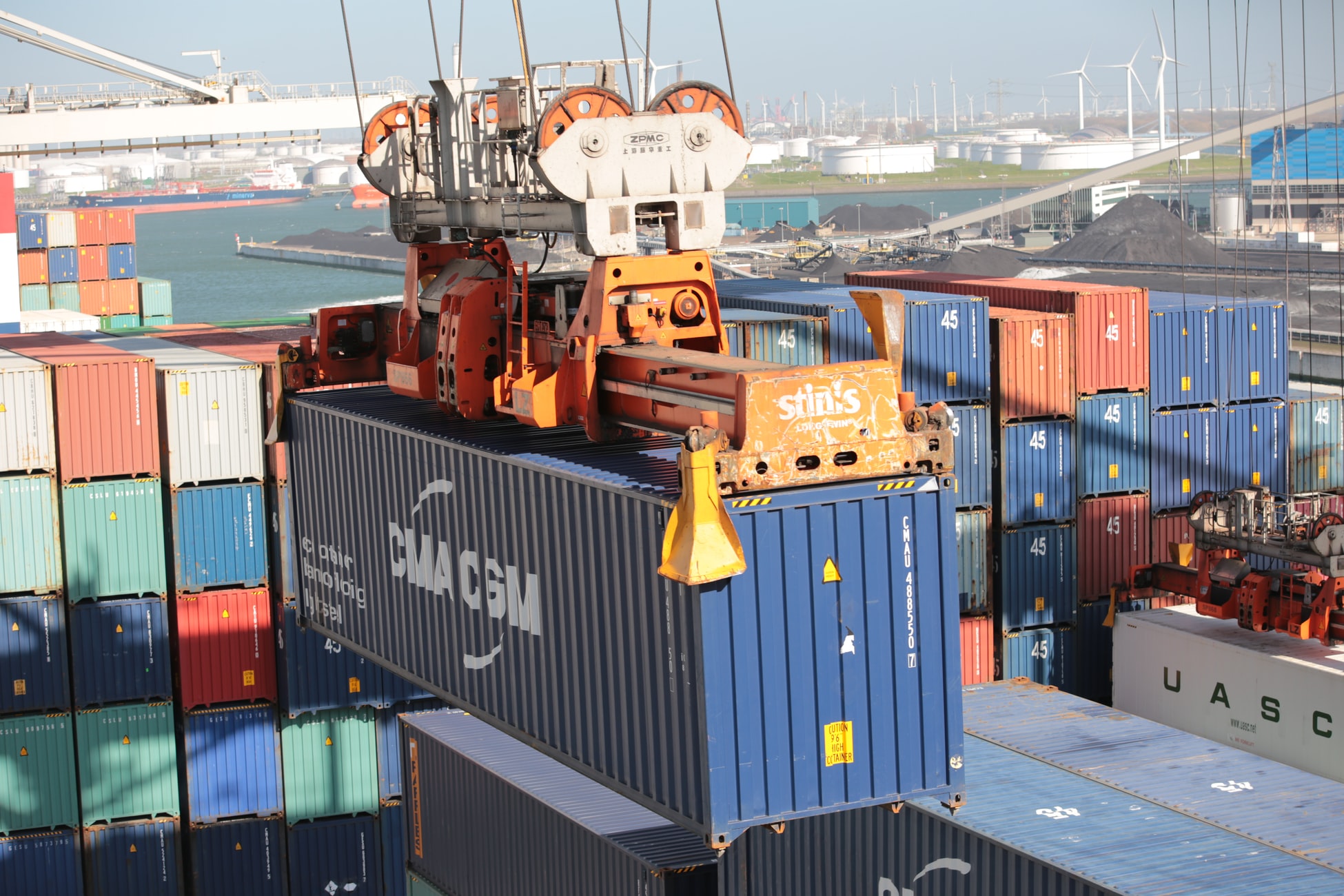
NORTH AMERICA - OPERATIONAL UPDATES
09/21/2021Terminal Operations:
LAX/LGB Terminal Update:
There are currently 65 ships (+31) at anchor awaiting berths in LAX/LGB as of Friday Sept 17th. Ships are waiting average 9-11 days to catch a berth. . Both ports are seeing record volumes month after month. Volumes are up 30% so far this calendar year. Delays forcing ships to wait at anchor are expected to continue for the remainder of the year.
Imports wait for an average of 6 days for a truck to pick up, and street dwells are up to 9 days on average. Import rail dwell is up to 12 days in the terminal complex. All terminals remain extremely congested and evaluating a reduction on their window for export cargo acceptance from four to three days. Customers are urged to continue to expedite the pickup of their import containers and inform any import COD requests at least four working days before the start of vessel operations.
Hapag-Lloyd and the industry in general are facing limited single empty return options and many time restricted to dual transactions. Local trucking delays have been reduced and are being closely monitored. The LAX/LGB rail operations from all terminals and the off dock ramps continues to deteriorate as demand exceeds capacity, therefore inland moves by rail can suffer considerable delays.
Oakland Terminal Update:
Currently there are no ships (-1) at anchor or drifting in the San Francisco Bay area as of Sept 17th. OICT berth availability has greatly improved with berth delays down to 0 days. Three cranes in berth 55 are in the process of being dismantled.
Import rail loads are taking longer than normal to move off the terminal and OICT continues to use their off dock CY to move local imports out of the pads to expedite space. Trapac berth delays have improved and vessels are receiving berth upon arrival. Import space has greatly improved with yard utilization down to 42%. Many lines have decided to bypass OAK leading to this terminal now being underutilized. Reefer plugs in Trapac are also becoming an issue as they are longer able to use generators on the terminal. Strict receiving time tables for reefer receiving will soon be implemented to ensure reefers are properly handled and not dwelling. Truckers and shippers are encouraged to pick up freight and to use the night gates to help the situation.
New York / Philadelphia Terminal Update*:
New York:
High berth utilization and congestion are still a major factor as delayed vessel arrivals are running upwards of 7 days.
During week 37 there were 5 vessels (+2) reported at anchorage awaiting berths at various terminals, while numerous other vessels have slowed down to coordinate their arrival with the opening of their designated berth. Changes of rotation for vessels to call other ports first, instead of sitting at anchorage for a week in New York until they have a berth, have increased slightly.
Yard utilization is being reported anywhere between 60% - 85% at various terminals, respectively, as import dwells continue to be much higher than normally expected, and still stand at an average of around 7 days.
Empty stock levels are once again becoming an issue, as surplus, in conjunction with the extended dwell import volume, is causing productivity issues for some terminal yard operations. Gate turn times are still above expected established service levels, although not as high as they were last week.
Four of the New York terminals are offering Saturday gates to facilitate increased import deliveries.
Philadelphia:
Berth utilization and congestion continues to be very high and is expected to extend through the end of September. Current vessel delays now running up to 5 days versus proforma schedules. For some services, berth congestion in New York is impacting arrivals in Philadelphia and causing vessel bunching.
Yard utilization is reported near 100%. High yard utilization is affecting productivity on both the vessel and land side. Large empty inventories continue to impact operations. Night gate hours next week will be on Monday, Tuesday, Wednesday, and Thursday evenings (Sept 20 through Sept 23 ).
Terminal is offering a Saturday gate to facilitate increased import deliveries.
Savannah Terminal Update
Currently 23 ships (+1) at anchor as of September 17th. Ships are delayed up to 5-7 days average awaiting berth assignment. The new first come - first serve started Aug 28th is making no difference thus far. Berth congestion continues with minimum 20 ships at anchor each day this week. The number of containers at GCT remains elevated at more than 76,000 as of Monday 9/13.
Ongoing projects - GPA's Peak Capacity project: 30% complete. This will add 800,000 TEUS of annual capacity in two phases. Phase 1, which opens in December, will deliver 3 new rubber-tired gantry (RTG) crane rows. Phase 2, to be complete in spring 2022 will add a 4th rtg. /// Berth 1 improvements 12% complete - expect completion 2023 /// Eight new ship to shore cranes - 15% complete - the new cranes arrive in 2023 /// Dredging resuming in October will not affect berthing of vessels like it did a month ago - it is maintenance dredging only and will run thru Jan 2022. The expansion behind 7-8-9 will be complete end of October.
Gate running fluid - turn times 43 single / 60 multiple since Monday - 55,958 moves. Rail running fluid with moves 5,730 since Monday @ 35 hours dwell time. Yard Utilization 96%.
Seattle Terminal Update*:
All Seattle/Tacoma terminals are operating at full capacity. There are currently 11 ships (-5) at anchor awaiting berth as of Sept 17th. Berthing delays in Seattle are up to 16-18 days at this time due to heavy volumes.
Saturday gates at Husky are now being offered to alleviate backlog of imports. Terminals are not accepting empty containers until vessels sail making room for additional inventories. Additional space has been provided to hold empty containers at T-5 in Seattle and West Hylebos in Tacoma allowing some additional empty returns for Hapag-Lloyd.
T18 in Seattle and Husky / WUT in Tacoma have started to pile import containers in inaccessible areas until there is additional space in the transrows as imports depart the terminal. HUSKY reports 0-3 days turn time in inaccessible areas and improving. Rail car shortages to get imports off the dock is a major contributing factor to the overall congestion. WUT’s rail backlog of rail cargo pending departures is seeing some improvement on the number of import rail cargo on dock. WUT yard utilization is at 70%. NWSA investments in T-5 are not slated to fully open until 2022 which will bring much needed additional capacity to the region. Chassis counts remain low due to the surge in imports.
To aid in import container availability some T18 import loads are being moved to T5; please check T18’s website for confirmation of availability and which terminal the container is located. o LFD will be extended accordingly, please be patient while information is updated
- Appointments are not required for pick-up of “available” containers at T5
- There are no chassis available at T5, so secure a chassis prior to arrival
- Empty return shutouts at various terminals continue to tie up chassis and slow pace of import pickups
Houston Terminals Update:
Currently 3 ships at anchor as of September 17th. The port was closed early on Monday 9/13 and all day Tuesday 9/14 due to Hurricane Nicholas. No damages were reported to the terminal. Barbours Cut terminal is at 75% utilization. Crane 4 will be down for another week due to a new hoist motor replacement. There were no labor shortages reported during the last week.
Lack of chassis continues to be a persistent issue due to the high volumes. Reefer plugs remain an issue with all plugs being utilized and these require chassis in all wheeled area. COVID cases in the area continue to be a serious issue. Additional 3 cranes are planned by first quarter 2022, bringing the total amount to 10.
Canadian Terminal and Rail Delays Update:
Terminals: Vancouver, Prince Rupert
Berth availability improved due to delayed vessels, however starting next week, we are seeing increased berth conflicts at GCT. Schedule adjustments are required to avoid anchoring.
Rail: Yard utilization at GCT has increased to 92%. Volumes have stabilized and there are no planned stops to rail production. Car supply by both major railways remains consistent. Rail dwells are presently at 3.1 Days
Terminals: Montreal
The labor situation in Montreal has improved slightly and we are seeing reduced delays to ship schedules.
Rail car supply has increased and we are starting to see reduced import dwell times. Rail dwell for the past week is 3.0 Days.
Terminals: Halifax and Saint John
- Halifax, CAN – Average 6.8 days* port
- Saint John, CAN – Average 2.4 days port
Intermodal Operations:
Capacity limitation in certain markets due to import volume spikes and severe drivers’ shortage. Please find main markets, and estimate lead-time to secure capacity at the following link on our website. (Note: Lead-time refers to timeframe to secure truck power, it is not dwell time):
https://www.hapag-lloyd.com/en/services-information/operational-updates/north-america.html
Chassis Pools:
With the recent unprecedented Import volumes, there is currently a historically high demand for chassis throughout the USA. This demand has shown to be persistent on 40ft chassis and intermittent on 20ft chassis. In order to minimize any negative impact on supply chains, customers are asked to take immediate steps to reduce container and chassis off terminal dwell time. This includes all inland terminals as well as port terminals. Without a significant reduction in the dwell times, truckers may face serious challenges and delays in securing good order chassis as long as this surge in imports continues.
- Chicago (USCHI) –Constrained on 40’ chassis.
- Louisville (USLUI) – Deficit on 40’ chassis.
- Indianapolis (USIND) – Deficit on 20’ and 40’ chassis.
- Houston (USHOU) – Deficit on 40’ chassis.
- Detroit (USDET) – Deficit on 40’ chassis.
- Memphis (USMEM) – Deficit on 40’ chassis.
- Tampa (USTPA) – Deficit on 40’ chassis.
- New York (USNYC) – Deficit on 40’ chassis.
- Seattle (USSEA) – Constrained on 20’ and deficit on 40’ chassis.
- Tacoma (USTIW) – Deficit on 40’ chassis.
- Los Angeles / Long Beach (USLAX/USLGB) – Deficit on 20’ and 40’ chassis.
Railway Operations:
Please Note: Current average dwell times for Hapag-Lloyd boxes at several terminals / ramps. Includes, MH, rail and truck moves.
- New York, NY - Average 8.7 days*
- MMR rail New York – Average 4.7 days*
- Long Beach, CA – Average 9.6 days*
- Los Angeles, CA – Average 15.9 days
- Charleston, SC – Average 13.4 days*
- Savannah, GA – Average 7.4 days
- Norfolk, VA – Average 9.5 days*
- Kansas City, MO – Average 8.7 days*
- Chicago, IL - Average 8.8 days*
- Memphis, TN – Average 8.1 days*
- Detroit, MI – Average 13 days*
- Dallas, TX – Average 4.1 days*
Houston, TX – Average 14 days*



